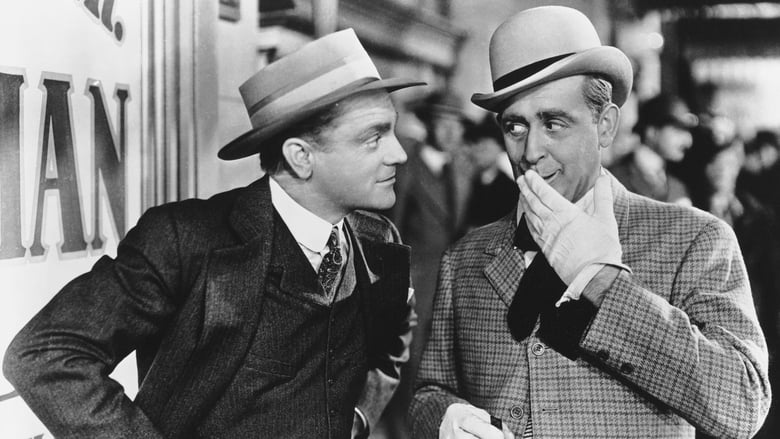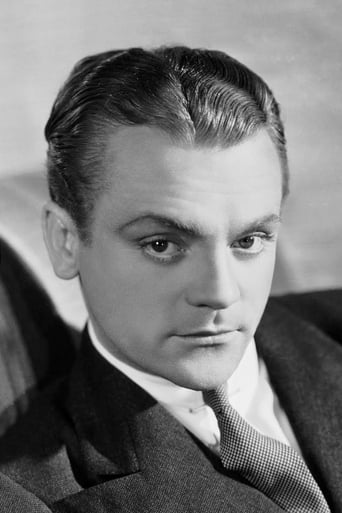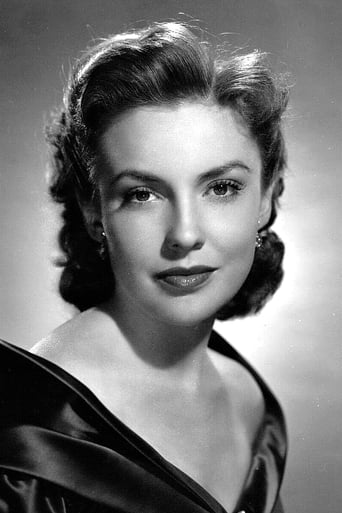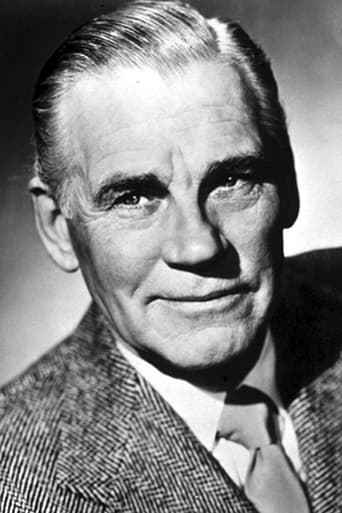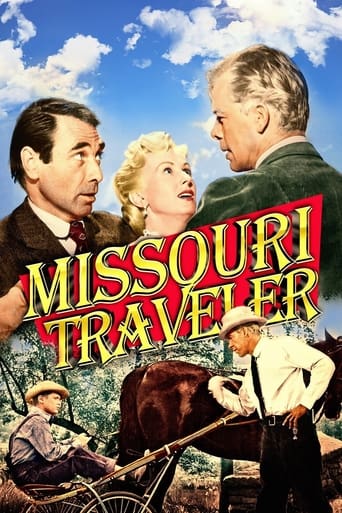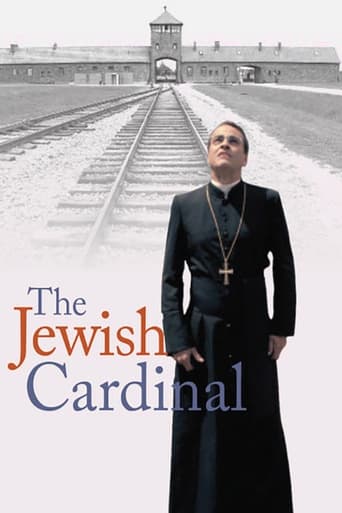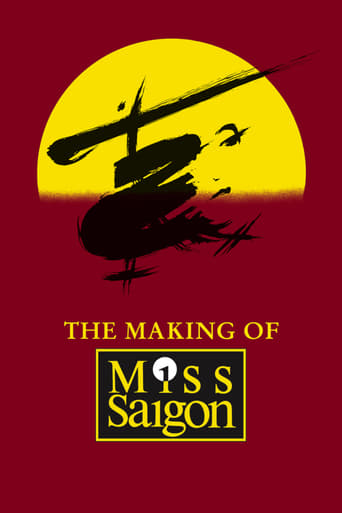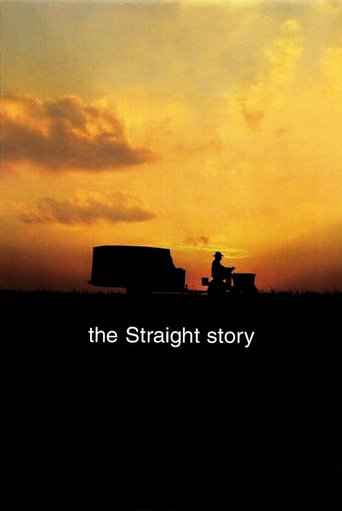Yankee Doodle Dandy (1942)
A film of the life of the renowned musical composer, playwright, actor, dancer and singer George M. Cohan.
Watch Trailer
Cast


Similar titles
Reviews
James Cagney. What can I say? I've seen several of his gangster films and he has such an intensity and presence. He makes other actors look tired and boring by comparison. He means every line he says, he looks other people right in the eye. There's no compromise with him. He doesn't act, he just expresses. I had no idea until much later that he also sang and danced. The dancing in this movie is incredible. He makes it look so effortless. It's so smooth and timed so perfectly and yet I'm sure a lot of it is very difficult. And his harmonies sound very nice as well.The story is pretty heart-warming. The characters seem to keep out doing each-other in kindness and understanding. Normally, you expect lies and secrets, arguments that eventually get resolved, romances that hang by a thread. Maybe they sugar-coated reality but it's nice to see such warm and caring characters in a movie. There is a lengthy partnership with no contract signed - they just trusted and respected each-other enough to not need one. Cagney gets flowers for his wife to soften the blow of her song being given to another lady to sing. He hesitantly admits it but she isn't surprised. She already knew when he brought her the flowers and she's happy for him.The movie builds slowly and is set-up in a logical order. George M. Cohan (Cagney) is asked to meet with the President but he doesn't know why. He recounts his life story to the President. We see how he was part of a show with his parents and sister (played by Cagney's actual sister). They were known as the 4 Cohans. George was maybe a bit arrogant when he was young. It's funny to see his parents talk more about smacking him than actually smack him. They know he needs discipline but are too nice to want to hurt him. We see him struggle later to find work and see the tricks he uses to get his foot in the door.A lot of the dialogue is snappy and entertaining. George always has something clever to say and he rarely misses a chance to trick people or make fun of them. At one point, he is dressed as an old man and a young woman thinks he is one. So he plays along before casually removing his beard and make-up as she screams in surprise. If people don't recognise him, he talks to them about himself in the 3rd person. He talks himself up but it's an act. He is confident but not arrogant.I tend to do a lot of the same things myself. As if I like to test people to see if they can see through my facade. To see if they can detect the subtle jokes or jabs in what I say. If they can't, they probably won't interest me or understand me. And besides, it's boring to simply parrot the standard phrases of everyday conversation. Intelligence needs a place to play and language (including body language) has plenty of space within it for hide- and-seek.It's moving to see how George M. Cohan's tunes took on a life of their own and become patriotic classics. They are more famous than he is now. He is humbled by the honour. And he never forgets his family. The part where he does an impromptu tap dance as he descends some stairs takes cool to another level. Apparently Cagney improvised it. He also deliberately inhabited Cohan's more rigid style of movement which is not Cagney's usual style. At one point, Cohan tries to join the army but they insist he is more useful on the home front. He improvises a dance for them as they cheer. Their morales have been boosted, but he just enjoys dancing.It's funny because I'm not American but I swear this movie made me feel proud to be American. It has such a positive, uplifting sense of patriotism to it. It doesn't make war sound fun but it makes being a soldier for America sound brave and worthy of respect. It makes you feel hopeful that the good guys will win. This is obviously very appropriate for 1942 when America had recently joined the war. But it's not a propaganda movie, it's a timeless movie about a performer who unexpectedly left a mark on America.
This movie is too long for what it has to offer. It has real dead spots in it. Some of the acting is flat. Despite all that, it remains a thoroughly remarkable movie because, when it rises to its best, it rises as high as any movie ever has - perhaps not surprising when you remember that it was directly by Michael Curtiz, who also directed Casablanca, The Adventures of Robin Hood, the Sea Hawk, etc.Unlike those three and many other great Curtiz movies, this one doesn't have a great sense of pacing. The musical numbers are often spectacular, not just because they have a lot of people on stage but because they move forward with a drive and energy second to none. Some of the "straight" scenes between those numbers border on the maudlin, however. And yes, there are very heart-on-your-sleeve patriotic numbers that have to be watched through a recollection that we had just been drawn into World War II, and many Americans, after Pearl Harbor, needed reassurance and wondered if we would survive intact.This won't always hold you riveted to your seat. There are plenty of moments best designed for going out to the kitchen to get popcorn, since corn is on the menu. But for the great scenes, and they are many, you will forget all about your popcorn and just marvel at the energy and life in this movie, a great deal of which emanates from the deservedly Oscar-winning performance of its star, James Cagney.-------------------------I just finished watching the new Ken Burns series on The Roosevelts. The last two, devoted to FDR's time as president and his health problems, put Cagney's performance of "Off the record" from the Rogers and Hart show "I'd rather be right", in a new perspective. FDR contracted polio in 1921 and never walked without braces again. Though he was careful to keep pictures of himself being wheeled and carried out of the media, the nation still knew that he no longer walked under his own power.When this movie was put together in 1942, "Off the record" was one of the Cohan successes that was given real prominence. I don't know how Cohan performed it in the 1937 Broadway show, but in the 1942 movie, Cagney makes a very striking image of Roosevelt striding vigorously back and forth across the stage. Surely this was meant to suggest that the president had a vigor that, at least physically, was no longer his to command. The fact that it was Warner Brothers' biggest success up until that point also suggests what influence that image must have had, even if only subconsciously, on the American voting public.
The amazing piece of timing here is when Warner Bros. began work on this biography of entertainer George M. Cohan, WWII had not yet broken out. The attack on Pearl Harbor occurred the day before shooting began. When the film opened people on the home front badly needed some morale boosting, and this film gave it to them. It's just a joyous musical costume piece from start to finish with nice comic touches balanced with some sentimental moments (supposedly Walter Huston's deathbed scene had even taskmaster director Michael Curtiz crying). There's nothing in the way of real conflict or even much heavy in the way of romance between Cohan and his fictitious film wife "Mary", who was modeled after Cohan's actual second wife in some ways. Cohan was actually married twice. Oddly enough, it was Cohan who said he wanted as little romance in the film as possible.The more I learn about Cohan the more I realize that Cagney was perfect to play him - both Irish Americans, both about the same size and build, and George Cohan's style of dancing and singing were about the same as Cagney's. It's hard to believe that Fred Astaire was Cohan's first choice to play himself. Astaire was a great talent, but I don't think he could have conveyed the combination of mischief, optimism and energy that was Cohan the way that Cagney ultimately did. Several people criticize Cagney's dancing here, but that eccentric style was Cohan's, who always considered himself more of an overall entertainer than a dancer in the first place.If you're "date conscious" as I am, there are some matters of plot that might bother you. Cohan was born on July 2 or 3, not July 4. Cohan's mother outlived his father by eleven years and Cohan's father was not "very old" when he died as is said in the film - at least by today's standards. When Cohan's father died in 1917, he was only 69. Cohan's sister did die young - she was only 39, dying in 1916, plus she was not his little sister. Instead Josie was a year older than George. The film has Josie marrying when she would have been close to forty, when she actually married at the beginning of the 20th century and thus was the one to break up the four Cohans, not George. Also, Cohan received his Congressional Medal in 1936, not as WWII began as shown in the film. However the plot device of having George M. recount his life story to FDR, receiving his Congressional medal in the Oval Office, and then dance joyously down the White House stairs and into the streets joining a group of marching soldiers in a chorus of "Over There" was probably a great way to bridge Cohan's patriotic past with what was then an uncertain time that certainly needed a dose of his optimism.The one thing that I did find a little odd - and one thing isn't much in a two plus hour long movie - is that it is hard to spot the actual point in the film where Mary becomes George's wife. There is quite a bit of domesticity shown before the two were married. Mary is cooking for George, staying in his apartment alone waiting for him to come home from the show, and acting very much like they are already married. The only way you know they are not is that George very subtly pops the question to the point that I'm surprised even Mary knew what he was asking! I know this doesn't seem like much in today's world, but considering that they were trying to paint Cohan in the most positive light possible and that the living arrangements might be misunderstood, I am surprised that the censors of that time never raised the issue.At any rate, I highly recommend this one. You'll have a great time, at least in part because you can see that Cagney is having a great time. He always said this film was his favorite, and it shows in his performance.
I have seen this film several times--including just recently. However, somehow I forgot to review the movie--and I noticed this today.This is a difficult film to rate, as it's so unique. After all, seeing Jimmy Cagney in the lead is a bit surreal. You don't expect to see this tough-guy performing as a hoofer. You also don't expect to see his style of tap dancing. It is NOTHING like Fred Astaire--full of grace and style. Instead, it's pure energy and is, at times, a bit gangly. Now this isn't to say it's bad--it just isn't subtle as Cagney throws EVERYTHING into the dances. His tapping is a bit more like stomping---but, it is still a marvel to watch.The film is a VERY Hollywoodized version of the life of the writer/performer George M. Cohan. Much of the guy's life is in the film but also much of the film is pure fiction meant to entertain. This is VERY typical of a film of this era. However, despite the style of dance and liberties the film takes, it is also incredibly entertaining and fun--filled with unabashed patriotism and spirit. Well worth seeing.


